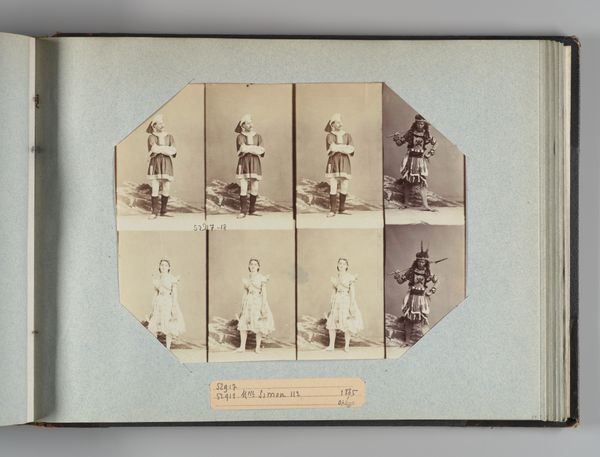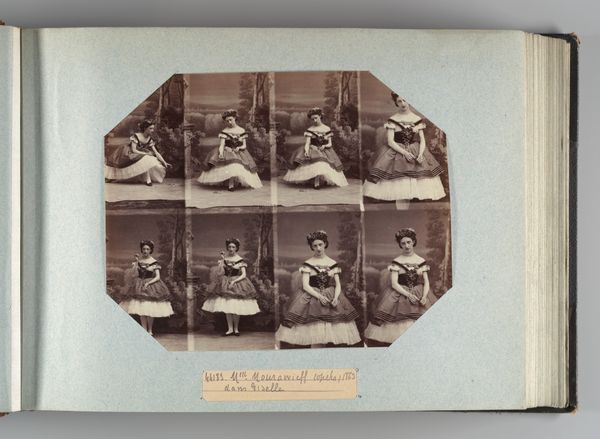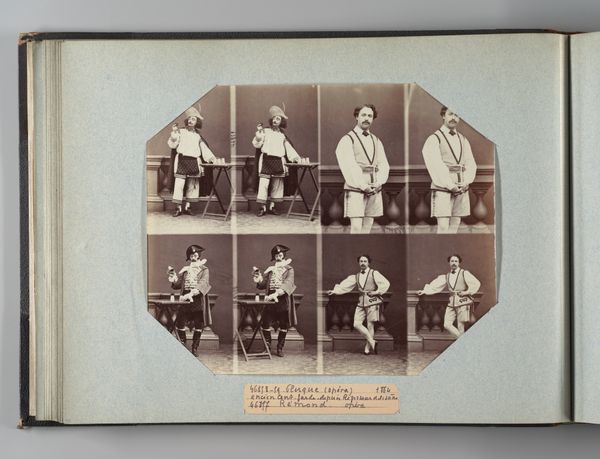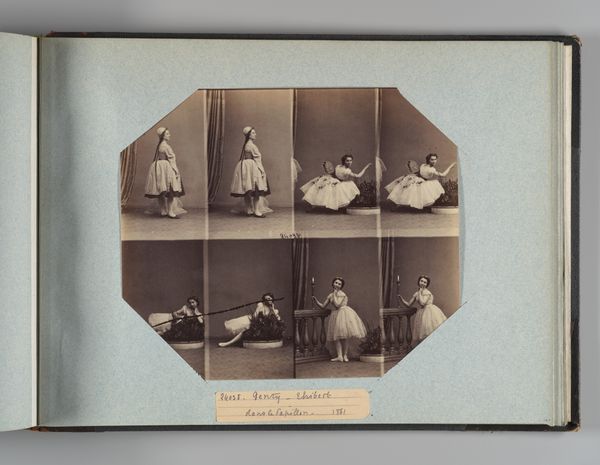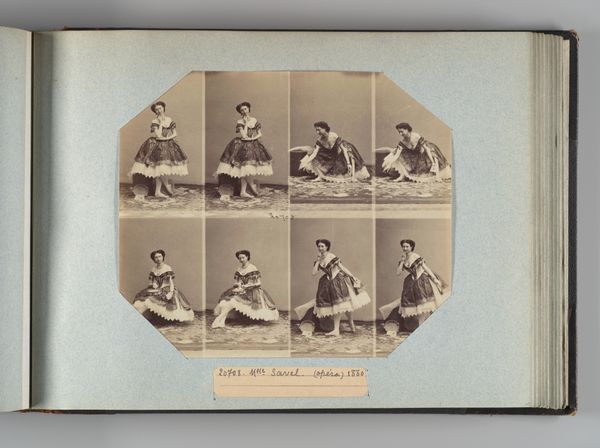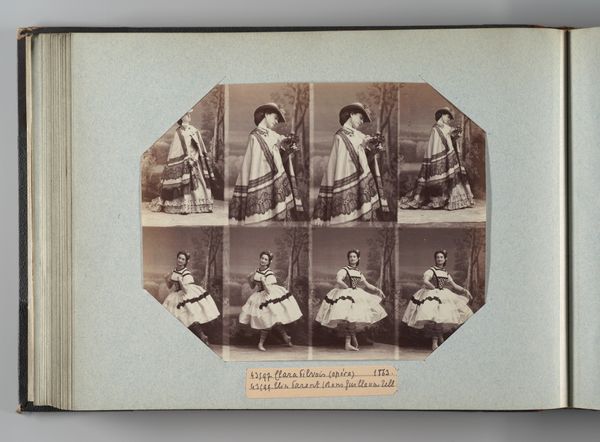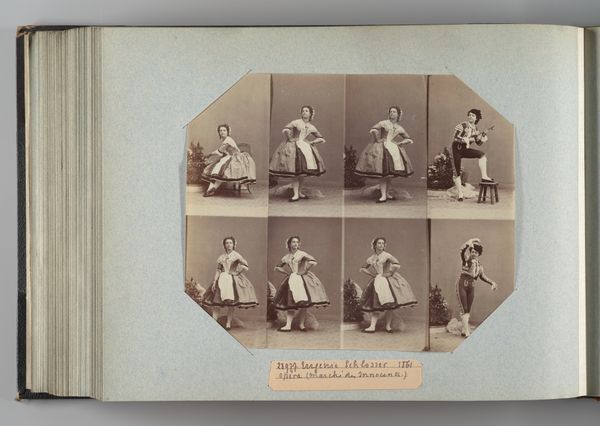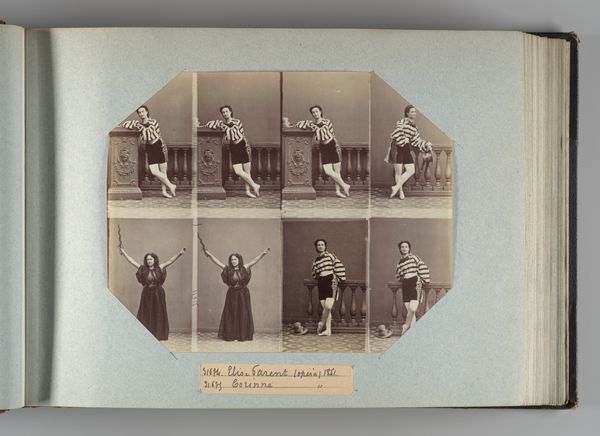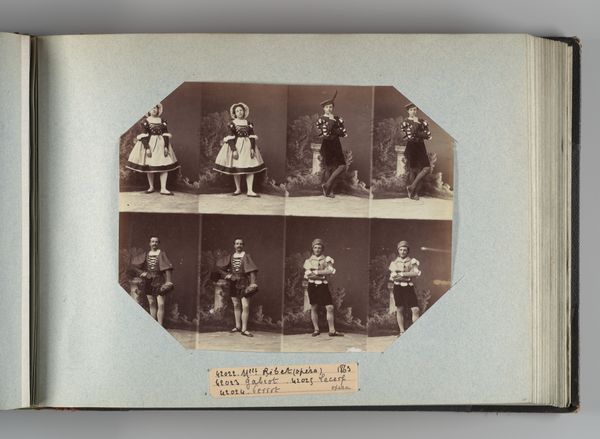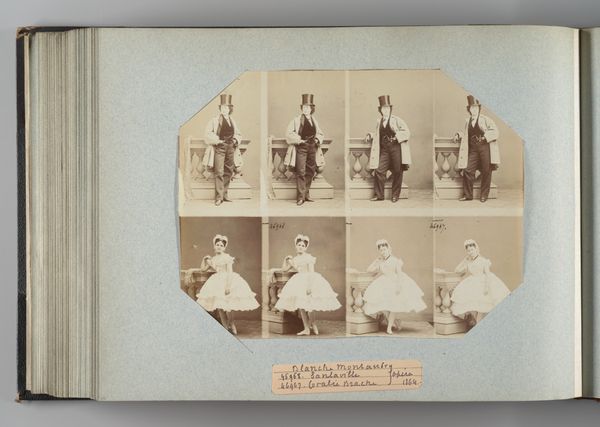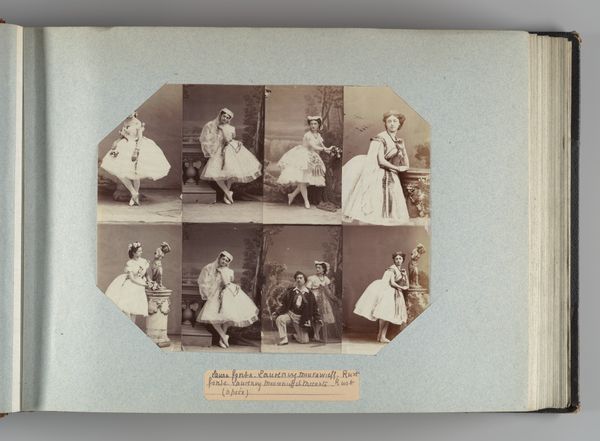![Mlle Guibert[?]; Mlle Laurent by André-Adolphe-Eugène Disdéri](/_next/image?url=https%3A%2F%2Fd2w8kbdekdi1gv.cloudfront.net%2FeyJidWNrZXQiOiAiYXJ0ZXJhLWltYWdlcy1idWNrZXQiLCAia2V5IjogImFydHdvcmtzLzViMmY4MDU3LTY4NDMtNGE5YS05NWU3LTlhMTU4MTUzNjA2MC81YjJmODA1Ny02ODQzLTRhOWEtOTVlNy05YTE1ODE1MzYwNjBfZnVsbC5qcGciLCAiZWRpdHMiOiB7InJlc2l6ZSI6IHsid2lkdGgiOiAxOTIwLCAiaGVpZ2h0IjogMTkyMCwgImZpdCI6ICJpbnNpZGUifX19&w=3840&q=75)
daguerreotype, photography
#
portrait
#
daguerreotype
#
photography
Dimensions: Image: 7 3/8 × 9 1/4 in. (18.8 × 23.5 cm) Album page: 10 3/8 × 13 3/4 in. (26.3 × 35 cm)
Copyright: Public Domain
Curator: This is a daguerreotype, a very early photographic process, from 1862. The artist is André-Adolphe-Eugène Disdéri, and it's titled "Mlle Guibert[?]; Mlle Laurent." It's currently housed at the Metropolitan Museum of Art. Editor: My first thought is “dreamy sepia stage!” It feels like catching a glimpse of dancers paused mid-rehearsal. I love the repetition of their forms—it's almost like a very early animation reel. Curator: Yes, Disdéri was known for his cartes de visite, small photographic portraits like this one, which gained immense popularity in the mid-19th century. What’s significant here is that this shows ballet dancers and their roles in society during the second empire of France. They are performing in these shots, acting the part expected from their positions. Editor: Absolutely! And I wonder about that staged quality too—it seems both candid and carefully composed. You have this dancer in multiple poses and multiple costume arrangements, and the repetition gives it that 'caught in time' sort of vibe. Almost a little ghostly with the light sepia washes. Curator: These multiple exposures offered a glimpse into the private personas and physical training, but the question of performance is key here. Notice their garments, the props, and the general theatrical context; these elements give shape to cultural attitudes, shaping both femininity and labor at this specific point. Editor: Good point, there’s something unsettling, maybe, about reducing dancers, skilled artisans, into a collection of still poses on a card. What I initially perceived as a glimpse of private lives could really just be a highly curated brand identity…it gives us a glimpse into the societal dynamics of the time. It makes you wonder what it’d be like to see that artist break that staged position. Curator: Exactly. Through an intersectional lens, we can really analyze how these images negotiate and portray gender and power within 19th-century artistic culture. Editor: I'll be rethinking all the Instagram grids from now on! The layering of those shots, along with how the picture's taken with one color gives them a sense of unification in their movement. What was just the sepia washing light feels like a connection into something much bigger than what one would perceive by its color.
Comments
No comments
Be the first to comment and join the conversation on the ultimate creative platform.
